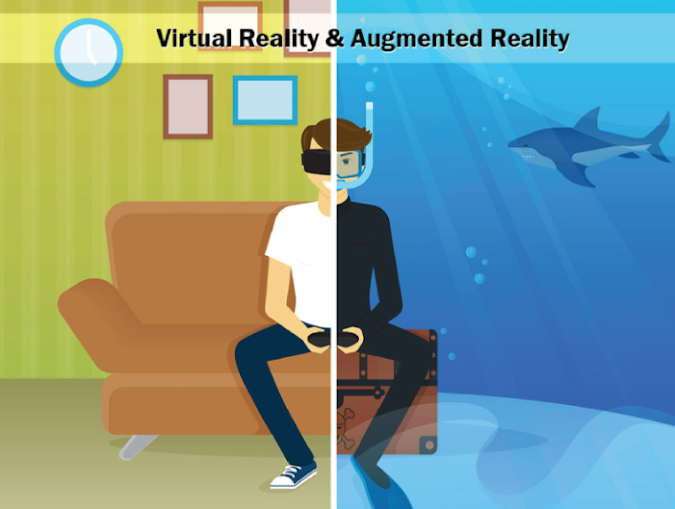Key Different Augmented Reality (AR) and Virtual Reality (VR)
In recent years, Augmented Reality (AR) and Virtual Reality (VR) have emerged as two cutting-edge technologies that are revolutionizing the way we interact with digital content and experience the world around us. These immersive technologies have the potential to transform various industries, including gaming, education, healthcare, and entertainment. In this article, we will explore the concepts of Augmented Reality and Virtual Reality, their key differences, applications, and the impact they have on our daily lives.
Augmented Reality (AR)
Augmented Reality refers to the integration of digital information or virtual objects into the real-world environment. It overlays computer-generated images, videos, or sounds onto the physical surroundings, enhancing our perception and interaction with the real world. AR can be experienced through smartphones, tablets, smart glasses, or headsets, allowing users to view digital content seamlessly integrated with their physical surroundings. This technology has gained significant attention with the introduction of popular AR applications like Pokémon Go, which blended virtual creatures with real-world locations.
Virtual Reality (VR)
Virtual Reality, on the other hand, creates a fully immersive digital environment that simulates reality and replaces the user's physical surroundings. VR typically involves wearing a head-mounted display (HMD) or VR goggles that completely immerse the user in a virtual world. This technology tracks the user's movements and adjusts the digital content accordingly, creating a sense of presence and allowing users to interact with the virtual environment. VR applications range from gaming and entertainment experiences to training simulations and virtual tours of places that are otherwise inaccessible.
Key Differences between AR and VR
Although both AR and VR provide immersive experiences, they differ in their approach and the level of immersion they offer. Augmented Reality enhances the real world by overlaying digital content, while Virtual Reality completely replaces the real world with a simulated environment. AR allows users to maintain their connection with the physical world and interact with virtual objects within it, whereas VR isolates users from the real world, creating a fully immersive experience.
Applications of AR and VR
Augmented Reality and Virtual Reality have applications across various industries. In the gaming industry, AR and VR provide gamers with immersive experiences, allowing them to interact with virtual characters and environments in unprecedented ways. Educational institutions are utilizing AR and VR to create engaging learning experiences, enabling students to explore historical events, visit distant places, or understand complex scientific concepts through interactive simulations. In healthcare, AR and VR are used for medical training, surgical planning, and therapy for phobias or PTSD. These technologies are also used in architecture and design, where virtual models and simulations help in visualizing and refining concepts before construction begins. Furthermore, AR and VR have transformed the entertainment industry, enabling users to attend virtual concerts, explore virtual museums, or even experience thrilling virtual roller coaster rides.
Impact on Daily Lives
AR and VR are increasingly becoming a part of our daily lives, enhancing our experiences and providing new opportunities for entertainment, education, and productivity. They enable us to explore new dimensions of storytelling, interact with digital content in innovative ways, and break the barriers of physical distance. From trying on virtual clothes before making a purchase to attending virtual meetings or conferences from the comfort of our homes, AR and VR are changing the way we work, learn, and entertain ourselves.
Conclusion
Augmented Reality and Virtual Reality are transformative technologies that are reshaping our perception of reality and opening up new possibilities in various fields. While AR enhances our real-world experiences by overlaying digital content, VR transports us to entirely virtual environments. Both technologies have immense potential and continue to evolve rapidly, offering exciting opportunities for innovation and creativity. As AR and VR become more accessible and widespread, we can expect them to play an increasingly significant role


Post a Comment for "Key Different Augmented Reality (AR) and Virtual Reality (VR)"